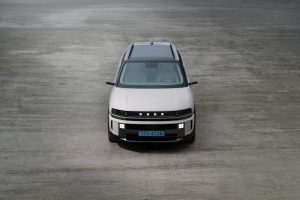The Challenge of Integrating Different Vehicle Modalities
In today’s world, the transportation landscape is changing rapidly. With emerging technologies, the concept of a singular mode of transportation is slowly being replaced by a diverse network of various vehicle modalities. From cars and buses to bikes and electric scooters, the options for getting around are only getting more varied. While this presents exciting opportunities for individuals and businesses alike, it also poses a significant challenge – how do we integrate these different vehicle modalities into a cohesive and efficient transportation system?
The Importance of Integration
Before diving into the challenges, it is essential to understand why integrating various vehicle modalities is crucial. For one, it allows for a more seamless and convenient travel experience for commuters. Instead of having to rely on one mode of transportation or constantly switching between different ones, users can now have a more streamlined and efficient journey. This integration also promotes sustainability and supports the current shift towards greener transportation options.
Additionally, integrating different vehicle modalities can have significant economic benefits. It can reduce the cost of owning and maintaining a personal vehicle and provide more affordable options for transportation. Moreover, it can help reduce traffic congestion, leading to better air quality and a more livable city.
Technological Challenges
Infrastructure Compatibility
One of the biggest challenges with integrating different vehicle modalities is ensuring that the necessary infrastructure is in place to support them. Each mode of transportation comes with its unique set of requirements, and current transportation systems are often not equipped to handle multiple types of vehicles. For example, while roads are designed for cars and buses, they are not always suitable for bikes and scooters. This lack of compatibility can lead to safety hazards and hinder the seamless movement of commuters.
Data Sharing and Management
Another major hurdle is coordinating the sharing of data between different transportation providers. An integrated transportation network relies heavily on real-time data to ensure that vehicles are available where and when they are needed. However, with each provider using different systems and technologies, sharing and managing this data can be a significant roadblock. Standardization of data and communication protocols is crucial for efficient integration.
Regulation and Policy
With the emergence of new vehicle modalities, many cities and governments are facing challenges in regulating and policy-making. Traditional regulations may not be suitable for these new modes of transportation, which can lead to conflicts and legal complexities. Policymakers must work closely with transportation providers to develop regulations that balance the benefits of integration with safety and public welfare concerns.
Solutions to Integration Challenges
Mobility as a Service (MaaS)
Mobility as a Service (MaaS) is a concept that aims to provide a seamless, integrated transportation experience for users. It combines different modes of transportation, such as public transit, car-sharing, bike-sharing, and ride-hailing, into a single platform. MaaS providers use data and technology to offer personalized travel options and make it easier for commuters to plan, book, and pay for their trips.
Smart Infrastructure
Smart infrastructure plays a vital role in integrating different vehicle modalities. With sensors, cameras, and other technologies, cities can collect and analyze data to understand traffic patterns, optimize routes, and improve safety. It also enables real-time communication between vehicles, drivers, and infrastructure, leading to more efficient movement and less congestion on the roads.
Collaboration and Partnerships
Finally, collaboration and partnerships between transportation providers and governments are key to successfully integrating different vehicle modalities. With shared goals and a coordinated effort, it is possible to overcome the technological, regulatory, and logistical challenges. Governments can provide financial incentives to encourage partnerships between different transportation providers, resulting in a more connected and sustainable transportation system.
Conclusion
The challenge of integrating different vehicle modalities may seem daunting, but it is one that must be tackled. With the right technology, regulations, and collaboration, it is possible to establish a more efficient, convenient, and sustainable transportation system for everyone. The future of transportation is undoubtedly multi-modal, and it is up to us to ensure that we overcome the challenges and embrace this shift towards a more connected world.










